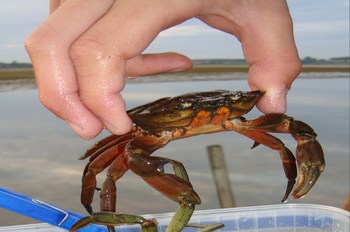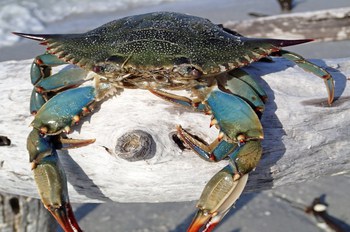Where Are Crab Snares Legal?
Recently, when I was buying a new crab snare, I was interested in its legality in certain states. So, I did some research to tackle the question.
So, where are crab snares legal? A crab snare is a crabbing device used by a variety of crabbers, mainly on the West Coast. It is legal to use a crab snare in California, Washington, and Oregon.
With this vague answer, I was not satisfied. So, I took a trip into each state’s Department of Natural Resources websites and scoured the web to better answer the question.
Crab Snare Legality by U.S. State
Disclaimer: This is not an official copy of rules and regulations. The explanation of the laws and regulations is correct as of the date specified: (June 9th, 2019). It is the fisherman’s responsibility to know the laws and regulations in effect at any given time.
Starting with the western states, where crabbing with a crab snare is much more popular, I began to see a trend. In California, Oregon, and Washington State it is legal to use a crab snare to catch Dungeness and Rock Crabs.
Once I got past the Rockies and made my way into Texas, Florida, and states on the East Coast it became a bit more difficult to find a straight answer. Crab snares are much more popular on the west coast, simply because they work better catching the larger crab species.
It’s much harder to catch a blue crab in a snare compared to a Dungeness crab because of its small claws. The trap being less popular on the Atlantic and Gulf coast gives state legislatures no reason to regulate it, making my job of answering this question harder.
Washington State
It is legal to use crab snares, also known as loop traps, in Washington State.
It is legal to recreationally catch Dungeness Crabs and Rock Crabs using crab snares in the state of Washington. The state allows the use of two snares in Puget Sound and coastal waters with the exception of Columbia River, where people can use three crab snares.
You are also allowed to go crabbing using a dip net, star trap, box trap, ring net, hand lines, or crab pots. You can use any hand operated instrument as long as it does not penetrate the crab’s shell or harm the animal in any way.
Source: Washington Department of Fish and Wildlife 2018-2019 sport fishing rules (be warned, this is a large pdf document)
If the source is out of date, try this page: Washington Department of Fish and Wildlife Shellfish Regulations
Oregon
It is legal to use crab snares, also known as loop traps, in Oregon.
It is legal to recreationally catch Dungeness Crabs as well as Rock crabs using crab snares all year except for October 16 to November 30. The state only allows snares with up to six loops.
You are also allowed to go crabbing using crab rings, pots, or baited lines. You are allowed a maximum of 3 rings, pots, or lines per person. If desired, it is allowed to go crabbing by hand, with a dip net, or rake.
Source: Oregon Department of Fish and Wildlife Recreational Shellfish – Regulations
California
It is legal to use crab snares, also known as loop traps, in California.
It is legal to recreationally catch Dungeness Crabs as well as Rock Crabs using crab snares. Each crab snare is allowed a maximum of six loops attached around the trap.
It is also legal to crab in California using hoop nets (also known as ring nets) and crab pots.
Source: California Fish & Wildlife Summary of Crab Trap Regulations
Now that we are drifting away from states on the Pacific coast, it is less likely for crab snares to be legal due to the weak arms found on blue crabs compared to Dungeness crabs.
Texas
Using a crab snare in Texas is technically illegal.
For catching blue crabs, they allow the use of crab lines (a string with bait attached to the end), crab traps (better known as crab pots), nets (such as ring nets), folding panel traps, sand pumps, and umbrella nets. The Parks & Wildlife website made very it clear that it is only legal to gather crabs in the state by those means.
Source: Texas Parks & Wildlife Crab and Ghost Shrimp Regulations
Florida
“Crab snares are not considered legal gear in the state of Florida.” (Source: Florida FWC)
Florida lists what gear they consider legal, including dip nets, drop nets (also known as ring nets), fold-up traps (what I call collapsible traps), handlines, and so on. Crab snares, on the other hand, are not considered legal gear in Florida.
The Other Coastal States
Continuing my research, I dove into Louisiana’s, Mississippi’s, and Alabama’s crabbing regulations. By that point, I began to see a trend.
Crab snares are so rarely used on the Gulf and Atlantic Coast that states have no regulations regarding the trap. This is because Blue Crabs are much smaller than Dungeness Crabs, which makes snares less effective. Therefore, it isn’t technically illegal to use crab snares, and I doubt anyone will penalize you for using one.
However, I strongly advise that you contact your state’s Department of Natural Resources for a clear yes or no on the trap. You can find your state’s DNR contact information by Googling: “(state) DNR)”.
For example, to find Maryland’s DNR I search: “Maryland DNR”. The result I’m looking for should have a .gov domain. Their contact information is usually at the bottom of the page, scroll down and call their number. They will be happy to help you with any crabbing questions you may have.
Another way to find information is by checking the state’s crabbing regulations. It’s rare that you’ll find a straight answer, but it can’t hurt. You will be able to find the regulations on the state’s DNR website. Try their website’s search feature or Google. (State) crabbing regulations.
Crab Snare Legal Guidelines
To keep the government off your back, there are some simple guidelines for your crab snare.
1) Make sure it has no more than 6 loops.
An actual law in Oregon, and an iffy topic in nearby Washington and California. I recommend using 6 snares. This will do just fine catching crabs and prevent tangling.
2) Use 2-3 crab snares.
Two crab snares per person is a good amount. More than that is a pain to manage and frowned upon in some areas.
3) Follow your states crabbing regulations.
This may be the crab daily take limit, minimum carapace length, etc. A good fisherman, or crabber, follows every state regulation.





